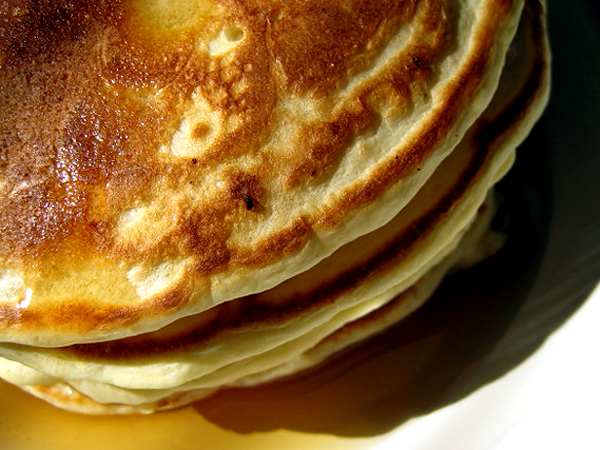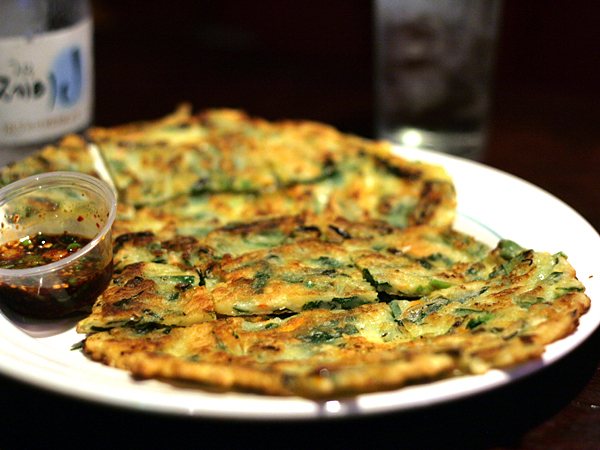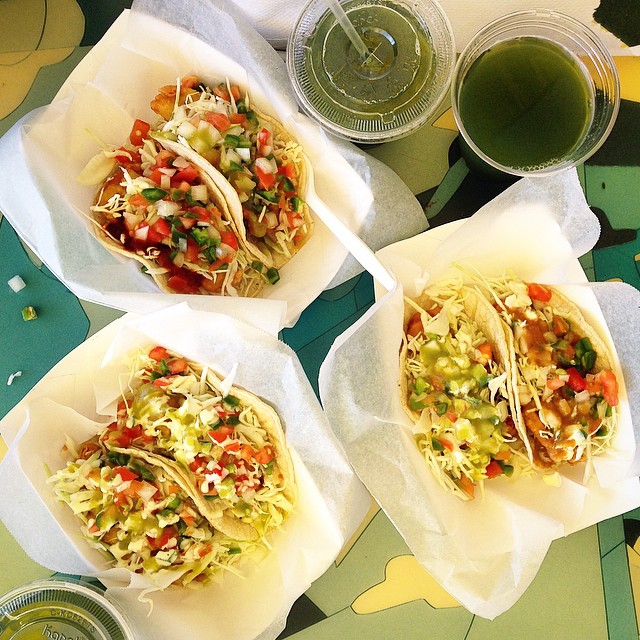It’s no secret that the restaurant business is hard. Hell, it’s not just hard, it’s harsh. Since we’re being brutally honest, let’s just call the restaurant business pretty much a free ride on the fast track to financial ruin.
Why is this the case? There are lots of factors. Sure, people are picky and fickle. Tastes are unpredictably trendy. But even after you’ve downsized your miso-marinated cod with wasabi mashed potatoes to small plates served at a bar, there’s still the issue of margin. Markup. Profit. Whatever it’s called, margin on food is hardly enough to cover the rest of the restaurant’s operating expenses. You might think that $12 for your starter salad is a rip-off, but it passes through a lot of hands on its ways from the topsoil to the table. The farmer, the distributor, the grocer, the buyer, the washer, the prepper, the cooker, the server, and the busser. And let’s not forget about overhead like rent, utilities, insurance, blah blah blah. Hell, by the time you scrape up that last bit of dressing with the bread that the restaurant gives away for free, they’ve made all of…ten cents. If that.
The bottom line is, a person has to run a restaurant out of a pure passion for food and a love of seeing people eat. A restaurateur cannot be in it for the money.

Unless he’s serving breakfast.
While running a restaurant is a fool’s labor of love, owning a breakfast joint is a businessperson’s cash cow. Take notes. This is your two-year MBA education all rolled into one little post about Bread & Porridge, a very busy breakfast place in Santa Monica.
Breakfast foods are just about the cheapest thing on the planet. Grains. Fruits. Vegetables. Eggs. We will look at the principle of cheap, or in accounting terms, “low cost,” from two perspectives. Let’s take the principle of “cheap” first from the business owner’s perspective.
A whole box of pancake mix, is at most, even when it’s made from secret holy organic wheat that is grown by Zen-ist monks in the Himalayas, $2 at the plebe market. Given that you’re a card carrying business owner, you can go to BulkCo and get five boxes of pancake mix for the same cost. That’s the equivalent of about a billion pancakes, which means it costs you $0.10 to make one pancake, which you lump into short stacks of two pancakes, costing you a whopping $0.25 because you can’t forget the foil-wrapped butter, and sell it all for $5.25. I’m no math genius, but that sounds like pure maple syrup. Even when you add in the cost of the mix-in milk, you’re making a whole lot of buttah on your pancakes. You might also know this as “Buy low, sell high.”
So maybe I hyperbolized and generalized and simplified (a little) to make a point about margin. Bread & Porridge probably makes their buttermilk pancakes from scratch. The pancakes are way too fluffy and soft to come from a store-bought mix. And though I was slightly disappointed by how anemic the strawberries were for $7, I was more than pleased to find out that "Strawberry Pancakes” meant that there were strawberries in the pancakes, and not just tossed as an afterthought on the pancakes. That would be "Strawberry-topped Pancakes," not that I'm nit-picky or anything.
Now let’s look at “cheap” from the customer’s perspective, using me as an example.
Going out for breakfast is unequivocally cheaper than going out for lunch or dinner, unless your idea of “going out for dinner” is a $1.95 slice of Cheese at Frankie & Johnnie’s. Now, if I were, say, unemployed, i.e. without consistent cash inflow, but still wanted to maintain the reputation with friends and family that yes indeed, I do go out to eat as prescribed by The Delicious Life, would I 1) risk ridiculous interest rates on a monthly balance of a dinner out which, even if it’s something “low key” or casual, still costs at least $20 a person because there is no such thing as dinner for under 25 bucks in LA or, 2) cash in my small Goole AdSense earnings for one month and go have a Cajun Omelet veritably overflowing with spicy sausage, bell peppers and oozing with Cheddar cheese, with egg whites only for a dollar more, served with roasted red potatoes that even Atkins couldn’t refuse, black beans and salsa which absolutely do not go with a Cajun omelette but come with every order anyway, fresh fruit, and a side of my choice of toast or English muffin, even though “nicer than a Sausage McMuffin for $2 at McClownburger” still costs less than the cheapest dinner out because it’s $10.85?!?!
Exactly. I go out for breakfast and look like a champ because Bread & Porridge’s omelettes are awesome. (Sausage McMuffins are *eh* I prefer the Sausage Biscuit, and while we're at it, I prefer my own homemade Egg McSarah.) Plus, it sure feels extravagant because with nine hundred condiments on the table, you can "have it your way."
What this “cheap from the perspective of the Customer” means is that when the Bubble bursts and people are foreclosing left and right, customers are still going to treat themselves because they would never give up “treating” themselves altogether because this is America the Land of Gluttony, but they will go to breakfast because it’s cheaper than dinner.
But success in business is not just about the finance and accounting of buy coffee low/sell it-in-a-French-press-at-the-table high. Bread & Porridge has strategy.
Bread & Porridge shares its block with another breakfast place, Snug Harbor. You may think, “Gee, that is dumb. That totally goes against the Hotelling Phenomenon. Why would direct competitors locate right next to each other?”
For some reason, restaurants do better when they clump together. I don’t kow why, they just do. There are certain things in the world that just are, like "peanut butter goes well with jelly," but have no explanation. It’s just that way.
Breakfast on the block is in high demand – there is always an amoebic mass of people standing on the sidewalk in front of both places. If a customer’s first choice for breakfast is Snug Harbor, then they are likely price sensitive; Snug Harbor is more diner-ish and cheaper than Bread & Porridge. If there is a waiting list at Snug Harbor, the customer will wait because their time is less valuable than the additional dollars they would have to spend to eat at the alternative, Bread & Porridge. On the other hand, if a customer’s first choice is Bread & Porridge, money is no object, because let’s be real, even if you’re out for breakfast because it’s less expensive than dinner, $11 for an omelet is not cheap. Customers won’t mind waiting 20 minutes for a table at Bread & Porridge. They may not even mind waiting 30 minutes. Get past a half hour though, and every minute becomes exponentially more cranky. Customers might wander over to Snug Harbor, and end up eating there if they get seated earlier.
Now this is where Bread & Porridge is strategic. Bread & Porridge took over the space next door and built a living room that looks like it was outfitted by the “barn” section of Pottery Barn: dark leather sofas, ottomans, places to hang your coat, and tables supplied with today’s newspaper. You can sit down, read the paper, make friends so you can trade for the Real Estate section, and even order your personal French pressed coffee. Bread & Porridge has created a space for you to relax so you won’t go next door to Snug Harbor. Brilliant. And they still make $3 off you for the coffee while you’re waiting!
Effin' brilliant.
Your MBA lesson at the end of the day? Open a breakfast place and stay out of residential real estate.
Bread & Porridge
2315 Wilshire Blvd (@ 23rd)
Santa Monica, CA 90403
310.453.4941
www.breadandporridge.com
Who Else Ate at Bread & Porridge?
fHungryLA: Bread & Porridge, Santa Monica (Jan 2006)
** a year ago today, what harry potter eats after partying in ibiza **
tags :: food : and drink : breakfast : restaurants : reviews : los angeles














djjewelz says
Welcome to UDL - University of Delicious Life.
AC Investor Blog says
This Blog is still maintaining a very good information with very interesting articles for the majority of visitors dedicated for this kind of knowledge, so it's a pleasure often visit it, so I hope and wish that you'll keep this Blog at this high level of quality. As I am an author of another knowledged financial Blog ( not only ) I like to share this kind of congratulations with my creative colleagues, because I know the work that costs to keep this information blogs always updated and with high quality to provide the best to the visitor, so many thanks Sarah !!!
AC Investor Blog says
This Blog is still maintaining a very good information with very interesting articles for the majority of visitors dedicated for this kind of knowledge, so it's a pleasure often visit it, so I hope and wish that you'll keep this Blog at this high level of quality. As I am an author of another knowledged financial Blog ( not only ) I like to share this kind of congratulations with my creative colleagues, because I know the work that costs to keep this information blogs always updated and with high quality to provide the best to the visitor, so many thanks Sarah !!!
KT says
I think the clumping restaurant phenomena has to do with what you mentioned: overflow. A group of girls out together will get hit on more by guys than a girl on her own.
Why?
Because when there are several girls together, there is more likelihood of successfully finding one the guy likes and who is in turn interested in him, plus it's safer and there are other possibilities if the initial target isn't interested.
Same with restaurants. If people aren't exactly sure what they want, they are more likely to go where there are a group of restaurants because there is more likelihood of finding a good fit for your group. It's safer, because you're not commiting yourself to one place. And if the initial target doesn't work out (too long a wait, don't like the menu, etc.) then there are other options.
Anyway, that's my essay. Hope I get an A for effort, at least. ;)
Jumpcut says
I can never figure out why they don't just put tables in that waiting room space...then we wouldn't have to wait! And they would make more money and have a higher turnover.
Jumpcut says
I can never figure out why they don't just put tables in that waiting room space...then we wouldn't have to wait! And they would make more money and have a higher turnover.
Richard Mason says
Bread & Porridge shares its block with another breakfast place, Snug Harbor. You may think, “Gee, that is dumb. That totally goes against the Hotelling Phenomenon. Why would direct competitors locate right next to each other?”
Huh? Why would I think that totally goes against the Hotelling Phenomenon? That totally is the Hotelling Phenomenon.
Richard Mason says
Bread & Porridge shares its block with another breakfast place, Snug Harbor. You may think, “Gee, that is dumb. That totally goes against the Hotelling Phenomenon. Why would direct competitors locate right next to each other?”
Huh? Why would I think that totally goes against the Hotelling Phenomenon? That totally is the Hotelling Phenomenon.
Clifford Morrow says
Thanks for sharing this article. I would like to ask a question here in the comments. Where and how can I get a loan for my business?
Pierre Stoltenbe says
Thanks for this!
Grace Deans says
Getting a loan for a business can be a complex process, but there are several options available depending on your needs and circumstances. One option is to approach a bank or credit union for a business loan. Another option is to explore government-backed loan programs or alternative lenders. It's important to do your research https://fitmymoney.com/guaranteed-approval-credit-cards-with-1000-limits-for-bad-credit/ and compare rates and terms to find the best option for you. You may also want to consult with a financial advisor or accountant for guidance. Good luck with your business endeavors!